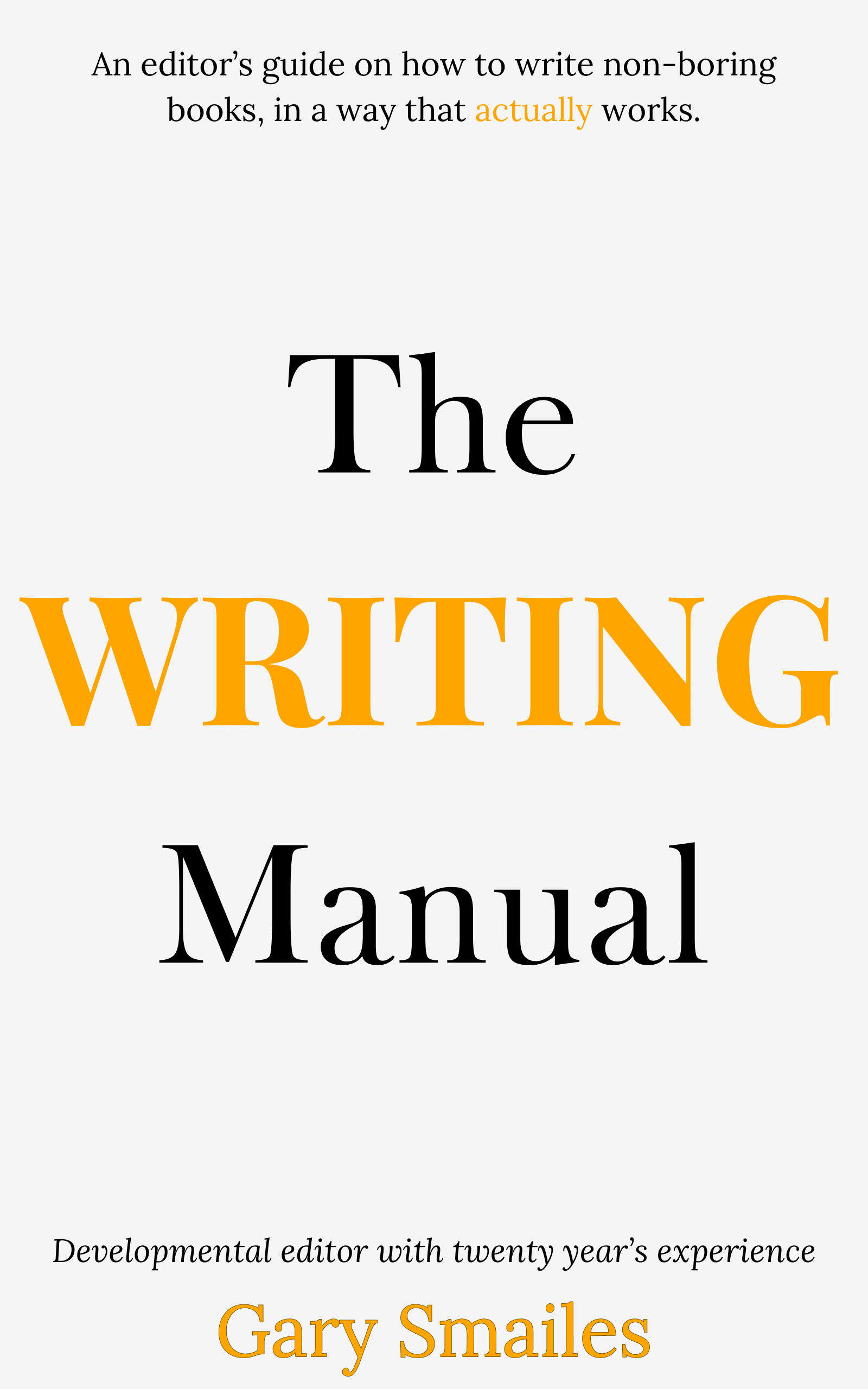



Imagine you're a writer who has just completed the first draft of your manuscript. You're excited yet uncertain about the next steps. Do you need a copy editor, or is a complete rewrite in order? This is a common dilemma many writers face, often stemming from a misunderstanding of what each process entails.
Editing is a critical step in the publishing world, with studies showing that 60% of manuscripts are rejected due to poor editing. Whether you're polishing an article, refining a novel, or preparing an academic paper, understanding the differences between copy editing and rewriting can make all the difference in achieving your writing goals.
This post aims to clarify these differences, helping you choose the right approach for your specific needs. Let's dive in and explore what sets copy editing apart from rewriting, ensuring you make an informed decision for your manuscript.
Table of Contents
Copy editing, often referred to simply as "copyediting," involves reviewing and correcting written material to improve accuracy, readability, and fitness for its purpose. The primary focus is on grammar, punctuation, syntax, and consistency. A copy editor ensures that the text adheres to a specific style guide and that there are no factual inaccuracies or logical inconsistencies.
The practice of copy editing has evolved over time, with its roots tracing back to the early days of publishing when editors would meticulously review manuscripts by hand. Today, copy editors utilize various digital tools to streamline the process, but the core principles remain the same.
Industry-standard guidelines, such as those provided by the Associated Press or the Chicago Manual of Style, often govern the copy editing process. These guidelines help maintain consistency and quality across different types of written material.
An example of a copy editing task might involve correcting a sentence like this: "The quick brown fox jump over the lazy dog." The copy editor would revise it to: "The quick brown fox jumps over the lazy dog."
Ultimately, the role of a copy editor is to polish a manuscript, ensuring that it is free of errors and ready for publication.
Rewriting is a more intensive process that involves making substantial changes to the content, structure, and tone of a manuscript. Unlike copy editing, which focuses on refining the existing text, rewriting can involve reimagining entire sections, altering the narrative flow, or even changing the perspective from which the story is told.
The practice of rewriting has a long history, often associated with authors who continually revise their drafts to enhance the substance and impact of their stories. This process is not just about correcting errors but about transforming the manuscript to better align with the author's vision and the audience's expectations.
Rewriting often requires a deep understanding of the subject matter and the ability to craft compelling narratives. It is a task that may fall to the original writer or a skilled editor who specializes in developmental editing.
For example, a rewriting task might involve changing a passage like this: "John was sad because he lost his job. He didn't know what to do next." to something more engaging and detailed: "John sat at his kitchen table, staring at the termination letter in disbelief. The weight of uncertainty pressed down on him, making it hard to breathe. What was he supposed to do now?"
In essence, rewriting is about making significant improvements to a manuscript, ensuring that the content is coherent, engaging, and aligned with the intended message or storyline.
Understanding the distinctions between copy editing and rewriting can help writers and editors choose the right approach for their manuscripts. Here are some key differences:
Copy editing typically involves minor adjustments, focusing on grammar, punctuation, spelling, and style consistency. Rewriting, on the other hand, entails major overhauls, which may include altering the narrative structure, changing the tone, or reworking entire sections of text.
The primary goal of copy editing is to polish the text, ensuring clarity and correctness while maintaining the original content. Rewriting aims to improve the overall quality and coherence of the manuscript, often enhancing the storytelling, character development, and thematic elements.
Copy editing is generally quicker and less labor-intensive than rewriting. Rewriting requires a significant investment of time and effort, as it involves deeper analysis and more substantial changes to the manuscript.
Copy editors need a strong command of language, grammar, and style guides. Rewriters, however, require a broader skill set, including creativity, narrative insight, and the ability to restructure content effectively.
Copy editing often utilizes tools like grammar checkers and style guides to ensure consistency. Rewriting may involve techniques like outlining, storyboarding, and character mapping to re-envision the manuscript comprehensively.
By recognizing these key differences, writers and editors can make informed decisions about whether their manuscript needs the precision of copy editing or the transformative power of rewriting.
Choosing copy editing is ideal when the manuscript is fundamentally sound but requires a thorough review for minor errors and inconsistencies. Here are some scenarios where copy editing is the appropriate choice:
If your manuscript has gone through several drafts and the content is solid, copy editing will ensure it is polished and ready for publication. This step is crucial for catching any lingering typos, grammatical errors, or style inconsistencies.
When it's essential to preserve the author's unique voice and style, copy editing provides a light touch that corrects mistakes without altering the original tone and narrative.
Copy editors are adept at ensuring that the manuscript adheres to specific style guides, such as the Associated Press or Chicago Manual of Style. This is particularly important for academic, journalistic, and professional writing.
Copy editing improves the overall readability of the text by refining sentence structure, clarifying ambiguous passages, and ensuring consistency in terminology and formatting.
Before submitting your manuscript to publishers, agents, or competitions, copy editing ensures it meets professional standards, increasing the chances of acceptance and publication.
Rewriting is the best course of action when a manuscript requires significant improvements or a complete overhaul. Here are some situations where rewriting is necessary:
If your manuscript has fundamental structural problems, such as a weak plot, inconsistent pacing, or unclear narrative flow, rewriting can help reorganize the content to create a more cohesive and engaging story.
When the manuscript's content needs to be substantially changed—whether it’s adding new scenes, removing redundant sections, or altering character arcs—rewriting allows for these extensive modifications.
If you decide to change the point of view, tone, or underlying themes of your manuscript, rewriting provides the opportunity to realign the text with the new direction. This can be particularly important for ensuring that the narrative voice and style are consistent throughout.
Rewriting is beneficial for adding depth to characters, enriching the setting, or developing more intricate subplots. This process allows for a more immersive and compelling story.
If you’ve received substantial feedback from beta readers, editors, or agents that highlights significant issues with the manuscript, rewriting can address these concerns and improve the overall quality of the work.
There are several myths and misconceptions about copy editing and rewriting that can lead to confusion. Here, we debunk some of the most common ones:
While both processes aim to improve a manuscript, copy editing focuses on refining the existing text, correcting grammar, punctuation, and style, whereas rewriting involves making substantial changes to the content and structure.
Rewriting is not a sign of poor writing but a necessary step in the creative process. Even experienced authors rewrite their drafts to enhance storytelling, character development, and thematic depth.
Copy editing cannot address significant structural or content issues. If a manuscript requires major changes, rewriting is essential before copy editing can effectively polish the text.
While editing software can assist with grammar and style checks, it cannot replace the nuanced understanding and creativity that human editors bring to the rewriting and copy editing processes.
Rewriting does not always mean discarding the entire manuscript. It often involves reworking sections, enhancing characters, and improving the narrative flow, building on the existing foundation.
Having the right tools and resources can make the processes of copy editing and rewriting more efficient and effective. Here are some valuable tools and resources to consider:
Grammarly and ProWritingAid are popular tools that can help you identify grammatical errors, style issues, and readability concerns. These tools offer suggestions to improve your writing, making the copy editing process smoother.
Referencing established style guides can ensure consistency and adherence to industry standards. Some widely used style guides include the Chicago Manual of Style, the AP Stylebook, and the MLA Handbook. These guides offer comprehensive rules for grammar, punctuation, and citation.
Tools like Merriam-Webster and Thesaurus.com can help you find the right words and avoid repetition. A thesaurus is particularly useful during the rewriting process to enrich your vocabulary and enhance your descriptions.
Software like Scrivener and Final Draft can help you organize and plan your manuscript. These tools offer features for outlining, storyboarding, and managing revisions, making the rewriting process more organized.
Engaging with beta readers can provide valuable feedback on your manuscript. Platforms like Critique Circle and Scribophile connect you with other writers and readers who can offer constructive critiques.
Joining writing communities can offer support, advice, and resources. Websites like NaNoWriMo and Writer's Digest provide forums, articles, and workshops to help you improve your writing and editing skills.
Understanding the distinctions between copy editing and rewriting is crucial for any writer aiming to produce a polished and compelling manuscript. While copy editing focuses on refining the text by correcting minor errors and ensuring consistency, rewriting involves more substantial changes to improve the overall structure and content.
Choosing the appropriate approach depends on the current state of your manuscript and your specific goals. Whether you need a final polish or a comprehensive overhaul, both processes are essential steps in the journey to create an engaging and professional piece of writing.
By utilizing the right tools and resources and following practical tips, you can effectively navigate both copy editing and rewriting. Remember, both processes are part of the creative endeavor to bring your vision to life and connect with your readers.
For more in-depth guidance and support, consider exploring the various resources and communities available to writers. With dedication and the right approach, you can transform your manuscript into a work that truly resonates with its audience.

Claim your free eBook today and join over 25,000 writers who have read and benefited from this ebook.
'It is probably one of the best books on writing I've read so far.' Miz Bent